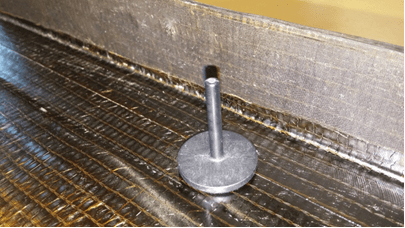CIDAUT has recently started the project BRACKETWELD, a 3 years Research & Innovation Action launched under the Platform 2 of the Large Passenger Aircraft IADP program within Clean Sky 2, which is orientated to the development, assessment and selection of integrative concepts to optimize assembly of elementary parts, sub-components and modules in modern aircrafts. The general objective of the BRACKETWELD project is to contribute to the cost-efficient integration of system and aircraft structures by the development of innovative technology for the rapid assembly of thermoplastic brackets to thermosetting composite components like stringers and frames.
Brackets are small fixation elements used as local links between aircraft structure, systems and cabin. The assembly of these elements to structural components made of thermosetting CFRP (Carbon Fibre Reinforced Polymers) is carried out by time-consuming techniques, like adhesive bonding or mechanical fastening, that add significant labour and tooling costs to the whole assembly process. Usually, brackets are made of metals but they could be made by injection moulding of reinforced thermoplastics leading to significant reductions in weight and costs. However, the use of thermoplastic brackets is still very limited because of the increased difficulty of the adhesive bonding process with thermoplastic materials.
Figure 1 Thermoplastic bracket example
The present research initiative aims to cope with the limitations mentioned above, by the development of an innovative technology for the rapid assembly of thermoplastic brackets to thermosetting CFRP parts using ultrasonic welding. Since the thermosetting materials cannot be welded, a layer of thermoplastic material will be co-cured with the CFRP component, being this layer an attachment area for the ultrasonic welding of the thermoplastic bracket. Figure 2 shows the general concept for the assembly of thermoplastic brackets to CFRP components:
Figure 2 Thermoplastic bracket welding concept
The key challenge will be the development of an appropriate surface media compatible with the thermoplastic materials of the brackets while at the same time achieving a very high adhesion to the thermosetting composite during the co-curing process.
During the project CIDAUT will contribute to the development of this innovative assembly technology addressing the following objectives:
- The development of an efficient test method for the quick evaluation of materials compatibility that will be used for the down selection of surface media alternatives.
- The definition, evaluation and selection of the most appropriate surface media for the selected thermoplastic brackets.
- The final validation by the assessment of assembly performances according to the usual requirements of bonded brackets.
The succeed in the development of this innovative assembly technology will mean significant advantages in terms of reductions in weight, costs and energy consumptions, avoiding the current needs for complex surface preparations, expensive adhesives, curing times and simplifying quality control procedures. The magnitude of the potential benefits is large, just considering the number of ten thousand brackets that are used in the A350-XWB.

